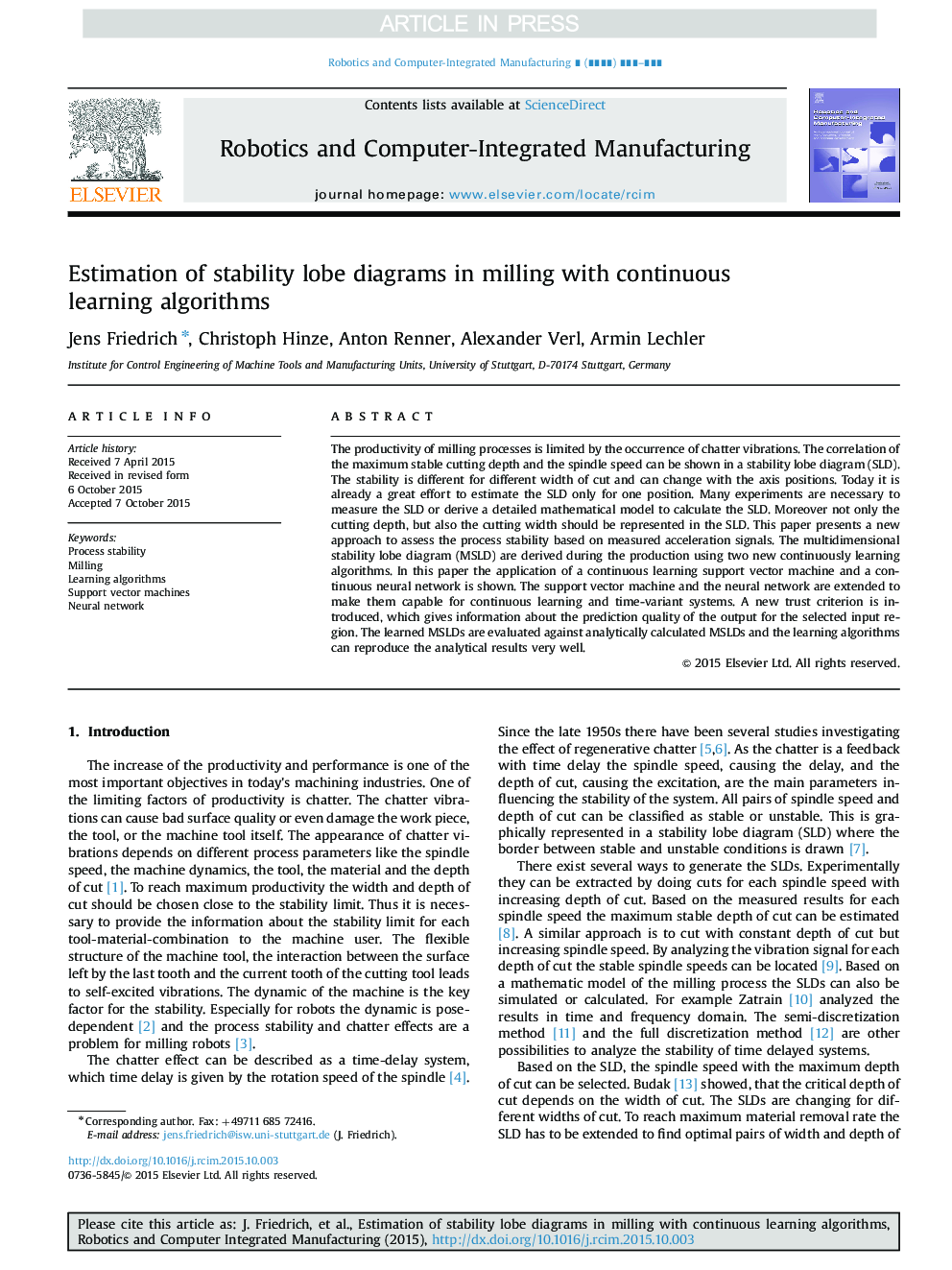| Article ID | Journal | Published Year | Pages | File Type |
|---|---|---|---|---|
| 4949061 | Robotics and Computer-Integrated Manufacturing | 2017 | 11 Pages |
Abstract
The productivity of milling processes is limited by the occurrence of chatter vibrations. The correlation of the maximum stable cutting depth and the spindle speed can be shown in a stability lobe diagram (SLD). The stability is different for different width of cut and can change with the axis positions. Today it is already a great effort to estimate the SLD only for one position. Many experiments are necessary to measure the SLD or derive a detailed mathematical model to calculate the SLD. Moreover not only the cutting depth, but also the cutting width should be represented in the SLD. This paper presents a new approach to assess the process stability based on measured acceleration signals. The multidimensional stability lobe diagram (MSLD) are derived during the production using two new continuously learning algorithms. In this paper the application of a continuous learning support vector machine and a continuous neural network is shown. The support vector machine and the neural network are extended to make them capable for continuous learning and time-variant systems. A new trust criterion is introduced, which gives information about the prediction quality of the output for the selected input region. The learned MSLDs are evaluated against analytically calculated MSLDs and the learning algorithms can reproduce the analytical results very well.
Related Topics
Physical Sciences and Engineering
Computer Science
Artificial Intelligence
Authors
Jens Friedrich, Christoph Hinze, Anton Renner, Alexander Verl, Armin Lechler,
